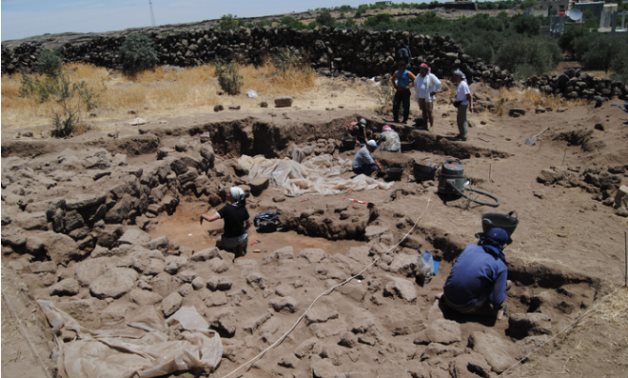
A new study combining archaeological, historical and bioarcheological data provides new insights into the early Islamic period in modern-day Syria. Credit: Jonathan Santana
CAIRO – 13 June 2022: A new study that combines archaeological, historical and biological data was published by Science Daily and revealed new insights into the early Islamic period in Syria.
The research team planned to focus on an ancient time period, and they found what they believe to be the remains of early Muslims in the Syrian countryside.
The multinational study began at a site dating back to the Neolithic period at Tell Qarrasah in modern Syria, where a number of archaeological burials were examined. These excavations were coordinated by a Spanish-French team who incorporated Syrian students into all the archaeological expeditions to contribute to their training in archeology.
"With the aim of studying the first groups in the area, we subjected the remains of 14 people to ancient DNA analysis," said Archaeologist Cristina Valdiocera of the University of Burgos in Spain, who coordinated the study.
The tombs date back to the Umayyad period in the late seventh and early eighth centuries. In light of these dates, a reassessment of the burial method has shown that it is consistent with early Islamic burial practices. It would have been impossible to establish this cultural identity without radiocarbon dates, as there were no previously known Muslim settlements or burial sites in the area.
"The genomic findings were also surprising as two people, a man and a woman, looked identical to the Bedouins and Saudis, suggesting a link to the Arabian Peninsula," said evolutionary biologist Megha Srigyan, who performed the data analysis while studying for her master's degree at Uppsala University in Sweden.
"Most of our evidence is indirect, but the different types of data taken together, indicate that this man and woman belonged to transient groups far from the homeland indicating the presence of the first Muslims from the Arabian Peninsula in the Syrian countryside," said Geneticist Torsten Günther.
DNA analysis provided evidence of the arrival of new cultural and religious practices in the Levant. The human remains that were found, as well as the rest of the archaeological materials, were deposited in the Archaeological Museum in Sweida, Syria.
From that moment on, the materials were placed under the responsibility of the General Directorate of Antiquities and Museums of Syria, according to the directorate's regulations.
Comments
Leave a Comment